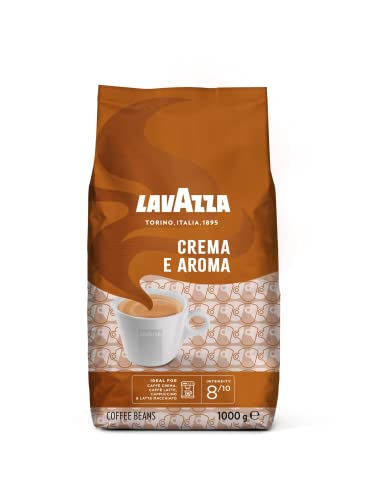온도조절기 You'll Never Guess This Starbucks Coffee Beans 1kg's Tricks
페이지 정보

본문
 Starbucks Coffee Beans 1kg
Starbucks Coffee Beans 1kgBefore Peppermint Mocha and red holiday cups before the advent of red holiday cups and Peppermint Mocha Starbucks was a simple cafe in a rainy Seattle. Its founders focused on selling whole bean coffee, but they weren't aware of the potential of espresso drinks.
Schultz changed everything. He was determined to demonstrate his roasting and blending abilities.
Origin
Before Starbucks coffee beans are in your cup, they've been through a long and winding journey. Coffee is grown almost exclusively in the Coffee Belt. This area extends across the globe between the Tropics Cancer and Capricorn. The climate, soil and culture of each region affects the taste of the coffee beans. Starbucks sources its coffee from more than 30 countries around the globe.
Starbucks coffees are typically made from Latin America, Africa and Asia-Pacific. These regions are renowned for their full-flavor, balance of acidity and weight. Starbucks also sources coffee from St. Helena in the South Atlantic Ocean, a volcanic tropical paradise.
Starbucks coffee beans are roasted to perfection for the perfect, smooth taste. The coffee beans are ground into a fine powder, which is ready for brewing. The powder is then mixed with water and it is poured into the cup to create a delicious cup. The result is a cup of espresso that is bursting with flavor and energy.
While the majority of Starbucks coffees are made from blends of various beans, there are many varieties of single-origin coffees that are available at the chain's stores. The single-origin coffees offered by Starbucks come with an array of flavors, including sweet and nutty and fruity, as well as chocolatey. Certain single-origin beans are certified organic.
Starbucks's beans are sourced from all over the world however, they must meet certain criteria to qualify as special. The term "specialty coffee" was first used in the 1980s, when roasters and cafes started experimenting with lighter roasting, manual methods and transparent sourcing. Starbucks didn't begin to source their coffee with these standards in mind, but it has since adopted a few of them.
In addition to ensuring its beans are grown in a responsible way, Starbucks works to improve the lives of those who cultivate their coffee. It offers its farmers a higher price above market prices and helps them invest in their communities. It also promotes sustainability and strives to reduce waste. This has led to the creation of new practices for coffee cultivation and methods that safeguard the environment.
Roast
Starbucks roasts beans in large quantities and purchases them in large quantities. The roasting process can take from 10 to 15 minutes. The result is that the beans are dark roast. Dark roasted beans have an intense flavor and have a full body. The beans are then ground and sent to supermarkets and stores in the form of a coffee grind. The coffee that is ground is bitter and is not the ideal choice for making the perfect cup. This is the reason why many people add lots of sugar, cream, flavorings, milk whipping cream, and other ingredients to their coffee. This will not mask the bitterness of the coffee, but it does make the drink more appealing.
The beans begin to steam when they are put in the roaster for the first time because of their internal moisture. Then comes the "first crack" that is an audible sound that indicates when the real roasting has started. At this stage the sugars begin to caramelize and water that has been bound up is beginning to escape. At this point, the structure of the bean is broken down and the oil begin to flow outward. The end of this stage is the point at which the majority of coffees are regarded as city roasts.
The roasted beans then cool and are then separated from any stones or other impurities that have been removed from the roaster. They are then inspected by hand and bagged to be sold. Some beans have a dark spot called the quaker. These beans did not change color and tasted burnt. This is a common phenomenon and does not suggest that the coffee is bad.
The beans are usually cooked in small quantities, sometimes as little as 20 pounds. They are referred to as "micro-lots". This is because every cup will be roasted according to specifications developed by a Starbucks team of masters of coffee. The team of coffee experts creates unique profiles that are used by all Starbucks(r) roasting facilities across the globe. These profiles guarantee that every cup of coffee is consistent and has a certain amount of body, flavor and aroma.
Flavor
Starbucks purchases their coffee directly from the farm where they are grown in order to improve quality and ensure an ethical source. For every pound of coffee beans sold, Starbucks plant trees. The beans themselves aren't identified by their origins to show the origins of the beans however some of the blends are named - Veranda is from Sumatra, Komodo Dragon from Indonesian and Anniversary is a mix of african and central american beans. The beans have a unique flavor profile and produce a smooth cup with a delicate blend of sweetness and smoothness. Each sip unveils a symphony of flavours, leaving a lingering, delicious taste on your tongue.
Weight
The weight of Starbucks coffee beans 1kg varies based on the kind of blend. A Starbucks House Blend, for instance, weighs 14 oz per pound. Walmart's pound of Espresso Roast beans weighs 16 oz. This translates into a 67% cost premium at Starbucks compared to Wal-Mart.
 Starbucks' Pike Place Roast is named for the iconic Seattle market. Its medium-light roast gives the perfect balance, sweetness and smoothness in every cup. It is made using beans from Latin America, this blend is ideal for Americano and espresso. This gourmet blend comes with the FlavorLock package to protect the coffee and for preservation of flavor. This is Starbucks the classic signature coffee. It is a excellent choice for all coffee fans! Made from 100% arabica coffee beans 1kg beans. An ideal gift idea for all Starbucks fans.
Starbucks' Pike Place Roast is named for the iconic Seattle market. Its medium-light roast gives the perfect balance, sweetness and smoothness in every cup. It is made using beans from Latin America, this blend is ideal for Americano and espresso. This gourmet blend comes with the FlavorLock package to protect the coffee and for preservation of flavor. This is Starbucks the classic signature coffee. It is a excellent choice for all coffee fans! Made from 100% arabica coffee beans 1kg beans. An ideal gift idea for all Starbucks fans.- 이전글Dating Sites Reviews Might Help Steer Clear of Disappointments as Well as Fraudsters 24.07.05
- 다음글Demo Slot Mahjong Panda Bisa Beli Scatter 24.07.05
댓글목록
등록된 댓글이 없습니다.
